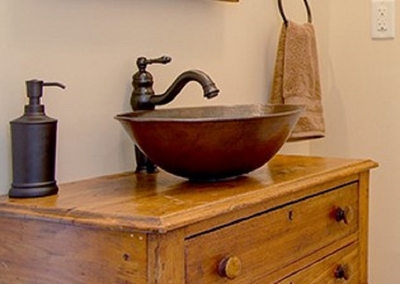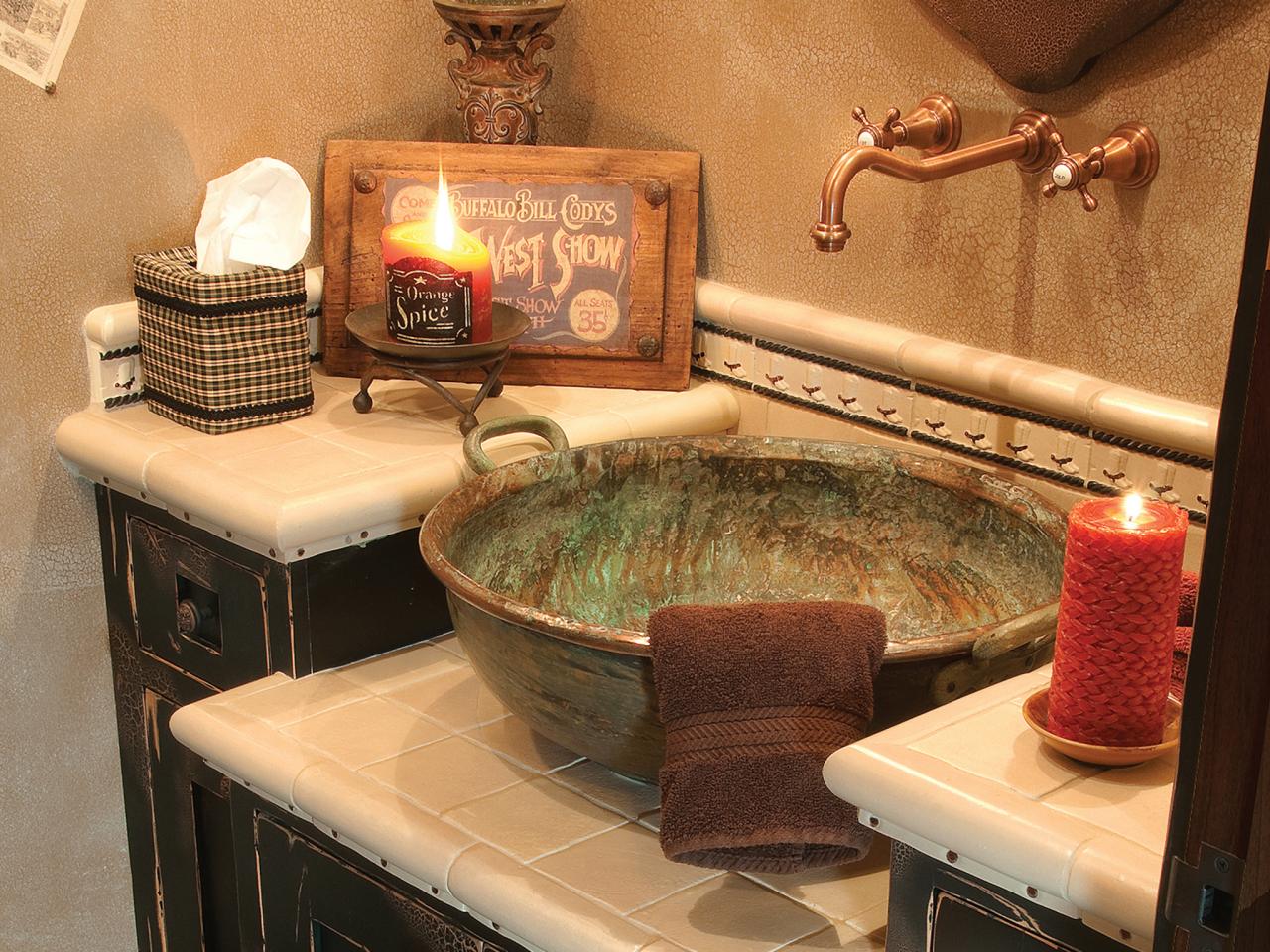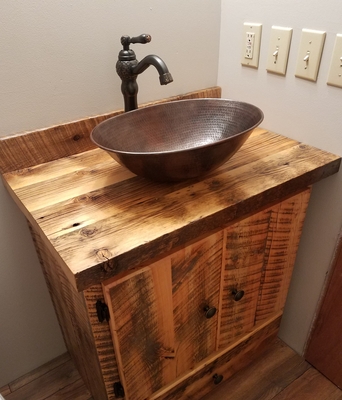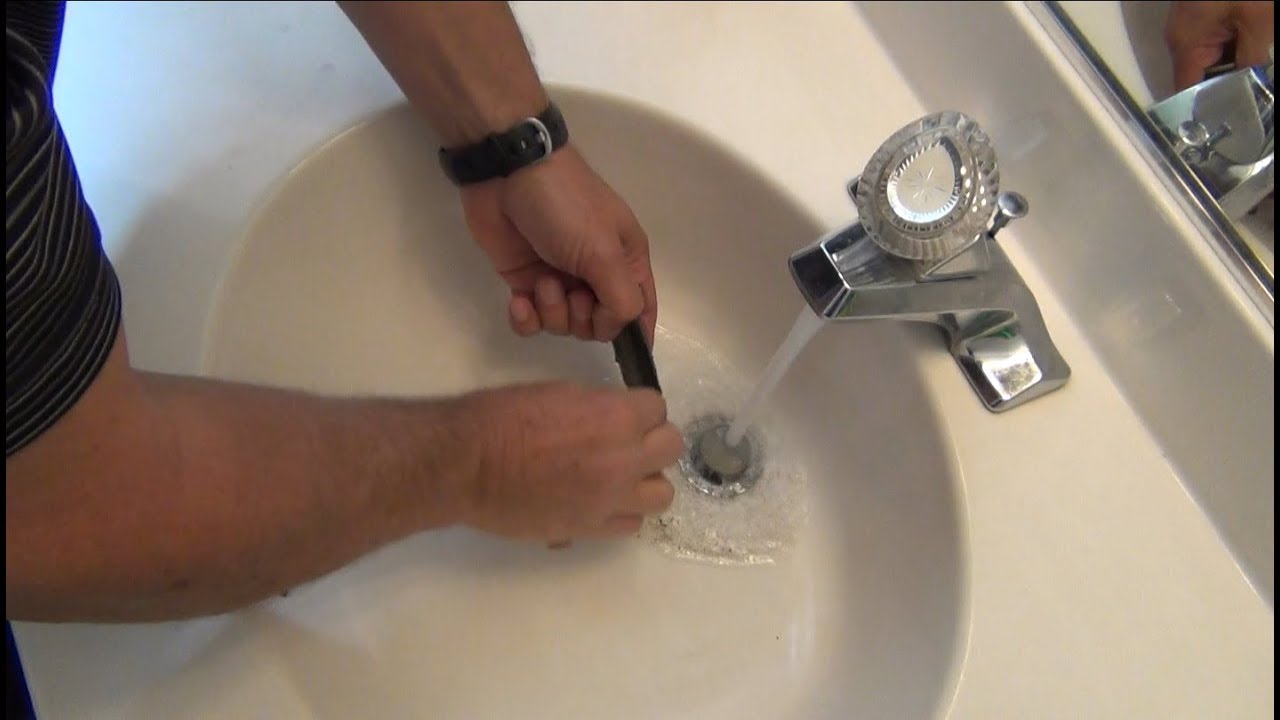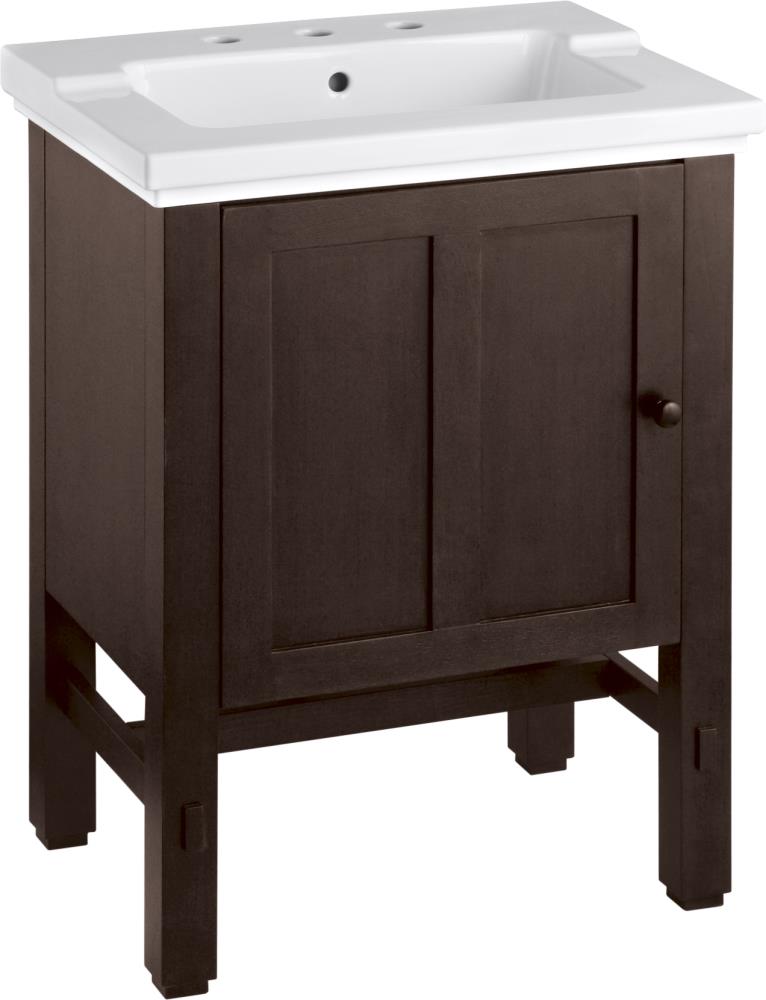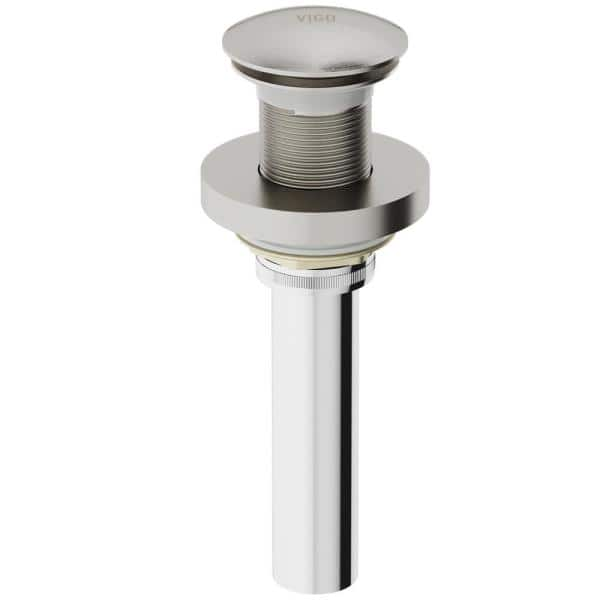Why Rustic Bathroom Sinks are a Perfect Blend of Style and Function
Rustic bathroom sinks have grown in popularity, and it’s easy to see why—they combine rugged charm with modern functionality in a way that transforms any bathroom into a cozy, inviting space. I’ve always loved how these sinks feel natural and down-to-earth while still being incredibly practical. Whether you’re designing a farmhouse-style bathroom or simply want to add a touch of warmth and texture, a rustic sink might be the perfect fit.
- Unique Aesthetic Appeal
Rustic bathroom sinks stand out for their unique, handcrafted look. No two are exactly alike, especially when they’re made from natural materials like stone or reclaimed wood. I love how a rustic sink immediately becomes a statement piece in the bathroom, adding character and personality that you won’t find in more modern, mass-produced designs. - Warm and Inviting Atmosphere
One of the biggest reasons I’m drawn to rustic sinks is the warmth they bring to a bathroom. The rough-hewn edges, natural textures, and earthy tones make the space feel more comfortable and lived-in. In contrast to the sleek, sometimes sterile look of contemporary bathrooms, rustic sinks invite you to slow down and relax. It’s like bringing a little piece of nature indoors. - Functionality Without Sacrificing Style
Rustic bathroom sinks are as functional as they are beautiful. Despite their old-world appearance, they are built to modern standards and designed to meet everyday needs. Many rustic sinks offer ample basin space, durable construction, and easy installation, so you’re not giving up convenience for style. I’ve found that these sinks often offer the best of both worlds—beauty and usability. - Versatility Across Different Design Styles
Don’t think that rustic sinks are only for country homes or cabins! I’ve seen these sinks work in a variety of design styles, from bohemian to industrial to modern farmhouse. They’re surprisingly versatile, adding depth and texture to almost any decor. Whether your bathroom leans traditional or modern, a rustic sink can complement and enhance the design. - Durability for High-Traffic Areas
Because rustic sinks are typically made from tough, natural materials, they’re built to last. Stone, copper, and wood sinks can withstand years of use, making them ideal for high-traffic bathrooms. I’ve always appreciated how well these sinks hold up to wear and tear, especially in busy family bathrooms where durability is key. - Sustainability and Eco-Friendly Choices
If you’re looking to make your home more environmentally friendly, a rustic sink can help. Many rustic sinks are made from reclaimed or sustainable materials, such as repurposed wood or recycled metal. Choosing a rustic sink is a great way to incorporate eco-friendly elements into your home without compromising on style or functionality.
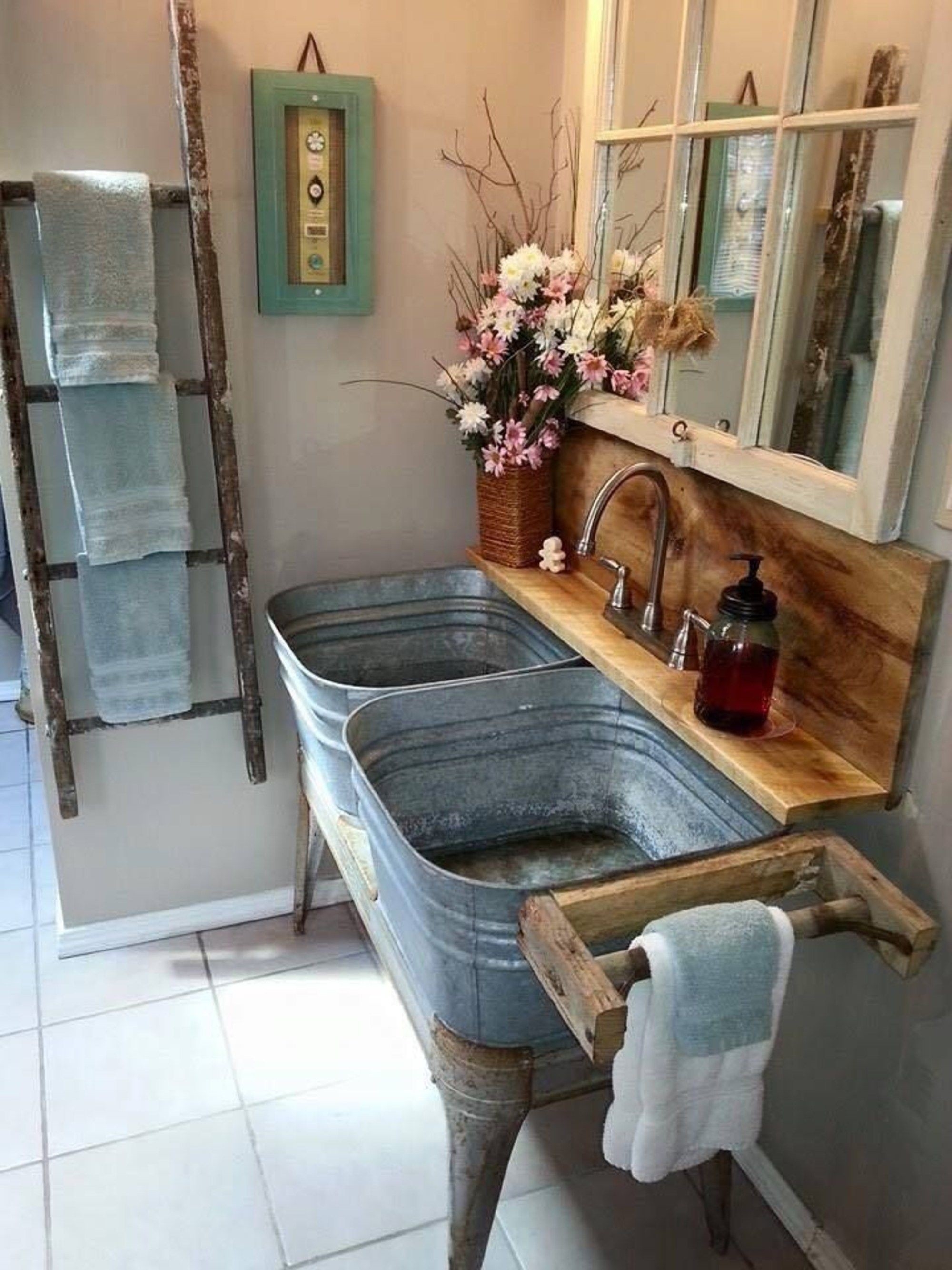
Top Materials for Rustic Bathroom Sinks: Stone, Wood, and Metal
When it comes to rustic bathroom sinks, the choice of material plays a huge role in defining the overall look and feel of the space. Over the years, I’ve come to appreciate how each material—whether it’s stone, wood, or metal—brings its unique charm and functionality to a rustic bathroom design. Let’s explore the top materials for rustic sinks and why they’re worth considering for your bathroom.
Stone Sinks: Raw Beauty and Durability
Stone sinks are a classic choice for rustic bathrooms, and it’s easy to see why. I love how they bring a natural, raw element into the space. Whether you choose a sink made from river rock, marble, or granite, each piece is unique and adds a luxurious, organic feel. Stone sinks are also incredibly durable and resistant to scratches and stains, making them a practical choice for high-use bathrooms.
Wood Sinks: Warmth and Earthy Vibes
Wooden sinks are less common but make a bold statement in any rustic bathroom. I’ve always admired how a wood sink can add warmth and a sense of connection to nature. These sinks are typically made from hardwoods like teak or oak, which are treated and sealed to resist water damage. If you want a sink that feels like a true work of art, wood is a great option, though it does require regular maintenance to keep it looking its best.
Metal Sinks: Industrial Edge with Rustic Charm
If you’re looking for a material that balances ruggedness with elegance, metal sinks—especially copper—are a fantastic choice. I’ve seen copper sinks add a beautiful, warm glow to bathrooms while offering anti-bacterial properties that make them perfect for daily use. Copper, bronze, and even stainless steel sinks can bring an industrial edge to your bathroom while still maintaining a rustic charm, especially if they feature hammered or patina finishes.
Concrete Sinks: Modern Meets Rustic
Concrete sinks are a great way to combine rustic elements with a modern aesthetic. I’ve found that concrete sinks have a unique, earthy look that feels raw and unrefined yet still contemporary. They’re extremely durable and can be molded into almost any shape or size, making them a versatile choice for rustic bathrooms that also lean toward industrial or minimalist design.
Reclaimed Materials: Sustainable and Unique
For those who are environmentally conscious, sinks made from reclaimed materials like wood, stone, or metal are an eco-friendly option. I’ve seen reclaimed wood sinks that were once part of old barns or reclaimed stone sinks from previous construction projects. These materials not only reduce waste but also add history and character to your bathroom. Each piece tells a story and creates a one-of-a-kind design element.
Ceramic and Porcelain with a Rustic Twist
While ceramic and porcelain are typically associated with more traditional bathroom designs, rustic versions of these materials—such as handmade, rough-textured, or unevenly glazed sinks—can add a rustic feel. I’ve found that ceramic sinks with rustic finishes work well when you want the ease of cleaning and durability of porcelain but with a little more texture and character.
Choosing the Right Rustic Sink for a Small Bathroom
Designing a small bathroom can be challenging, but choosing the right rustic sink can make a world of difference. I’ve found that a well-chosen sink not only adds visual interest to a small space but can also maximize functionality. Here’s how to select a rustic sink that works perfectly in a compact bathroom without sacrificing style or practicality.
Opt for a Space-Saving Wall-Mounted Sink
In small bathrooms, space is a premium, and I’ve learned that wall-mounted sinks are a great way to save room without compromising style. Rustic wall-mounted sinks made from wood, metal, or stone can create a streamlined look while still maintaining that rustic charm. By mounting the sink to the wall, you free up valuable floor space, which can make your bathroom feel larger and more open.
Choose a Compact, Yet Statement-Making Vessel Sink
Vessel sinks are another great option for small bathrooms. I’ve always loved how vessel sinks sit on top of the counter, making them a focal point even in tight spaces. A rustic vessel sink, whether it’s made from copper, stone, or reclaimed wood, can bring an element of nature into your bathroom while requiring minimal counter space. Plus, they come in a wide range of sizes, so you can easily find one that fits your small bathroom.
Consider a Corner Sink for Maximum Efficiency
If you’re really pressed for space, a corner sink might be your best bet. Rustic corner sinks are designed to fit snugly into unused corners, freeing up room for other essentials like storage or even a small vanity. I’ve seen some beautifully crafted rustic corner sinks made from stone or metal that don’t skimp on style, despite their compact size.
Go for an Undermount Sink for a Sleeker Look
If you want a more seamless appearance in a small bathroom, an undermount sink is a great option. These sinks sit beneath the countertop, which not only saves space but also makes the bathroom feel less cluttered. I’ve found that an undermount sink with a rustic stone or wood finish can provide that rustic look while keeping things clean and simple.
Prioritize Functionality Without Skimping on Design
It’s important to remember that in a small bathroom, functionality should be a priority. Look for sinks that are not only stylish but also practical for daily use. I recommend choosing materials that are durable and easy to clean, like stone or metal. Even with limited space, you don’t have to sacrifice design—there are plenty of rustic sinks that strike a balance between beauty and utility.
Pair with Simple Fixtures to Avoid Overwhelming the Space
In a small bathroom, it’s easy for the design to feel cluttered, especially if the sink has a lot of texture or detail. I’ve found that pairing a rustic sink with simple, minimalist fixtures—like streamlined faucets or plain mirrors—helps keep the focus on the sink without overwhelming the space. This way, the rustic elements shine while the overall look remains balanced and cohesive.
How to Pair Rustic Sinks with Countertops and Vanities
One of the most exciting aspects of designing a rustic bathroom is figuring out how to pair your rustic sink with the perfect countertop and vanity. I’ve always loved the process of mixing and matching textures and materials to create a harmonious and visually appealing bathroom. Here’s how to pair rustic sinks with different countertops and vanities to create a stunning and functional space.
Wood Countertops for a Cohesive, Rustic Look
If you want a true rustic vibe, pairing a rustic sink with a wooden countertop is a no-brainer. I’ve seen how well stone or metal sinks work with wood countertops, as the natural textures complement each other beautifully. The key is to choose a wood that is treated and sealed to resist water damage, ensuring that your countertop lasts while enhancing the overall rustic aesthetic.
Natural Stone Countertops for Timeless Elegance
For a more luxurious touch, consider pairing a rustic sink with a natural stone countertop, such as granite or marble. I love how the smoothness of the stone contrasts with the ruggedness of the sink, creating an elegant balance. Darker stones can add drama, while lighter stones can keep the space feeling airy and open. Stone countertops are also durable and easy to clean, making them a practical choice.
Metal Vanities for Industrial Flair
If your rustic sink leans towards an industrial look, pairing it with a metal vanity can enhance that aesthetic. I’ve found that iron or distressed metal vanities work beautifully with rustic sinks, creating a cohesive design. This combination can evoke a workshop or loft feel, adding an edgy touch to your bathroom while still maintaining that rustic charm.
Mixing Textures: Combining Wood and Stone
Don’t be afraid to mix materials! I’ve seen stunning results when rustic sinks are paired with a combination of wood and stone elements. For example, a wooden vanity paired with a stone countertop can create a layered look that feels rich and inviting. This mix of textures adds depth and interest to the space, making it feel more dynamic.
Choose a Simple Vanity Design to Let the Sink Shine
When working with a rustic sink, it’s often best to keep the vanity design simple. I’ve learned that opting for a clean-lined, minimalist vanity allows the sink to take center stage. Whether it’s a rustic farmhouse style or a sleek modern design, keeping the vanity understated will help highlight the unique characteristics of your rustic sink.
Incorporate Open Shelving for a Rustic Feel
If you want to embrace the rustic aesthetic fully, consider using open shelving instead of a traditional vanity. I love how open shelving can showcase the rustic sink while providing additional storage and display options. You can style the shelves with rustic decor items, plants, or bathroom essentials, enhancing the overall design while keeping it functional.
Rustic Sink Styles: From Farmhouse to Modern Rustic
Rustic sinks come in a variety of styles, each with its unique flair and charm. I’ve always been fascinated by how the same rustic material can be transformed into different sink designs, from traditional farmhouse looks to modern interpretations. Let’s explore some of the popular rustic sink styles and how each can influence your bathroom’s overall aesthetic.
Farmhouse Sinks: Classic and Timeless
Farmhouse sinks are a staple of rustic design, and they never seem to go out of style. I love their deep basins and apron-front designs that evoke a sense of nostalgia. Typically made from materials like fireclay or porcelain, farmhouse sinks often feature a simple, understated elegance that complements any rustic bathroom design. They work beautifully in traditional and modern settings alike.
Vessel Sinks: Artistic and Eye-Catching
For a more contemporary take on rustic design, vessel sinks offer an artistic flair. I’ve seen these sinks made from materials like hammered copper, reclaimed wood, or natural stone, and they sit on top of the counter, creating a striking visual element. Vessel sinks can add a touch of sophistication while still embodying that rustic charm, making them a versatile choice for various design aesthetics.
Console Sinks: Blending Vintage and Modern
Console sinks combine vintage charm with modern functionality. Typically supported by a metal frame, these sinks can be paired with rustic materials to create a balanced look. I’ve always appreciated how console sinks save space while adding an airy, open feel to the bathroom. They work particularly well in small or minimalist designs where every inch counts.
Farmhouse Trough Sinks: Rustic and Practical
Trough sinks are a fantastic choice for rustic bathrooms, especially if you need a larger basin. These sinks can accommodate multiple users, making them ideal for family bathrooms. I love how they often feature a simple, linear design that emphasizes functionality while maintaining rustic appeal. Trough sinks are usually made from durable materials like stone or metal, adding to their practicality.
Modern Rustic Sinks: A Contemporary Twist
For those who appreciate the rustic aesthetic but want a more modern feel, contemporary rustic sinks offer a perfect solution. I’ve found that these sinks often feature sleek lines and minimalistic designs while incorporating rustic elements, like textured finishes or organic shapes. They bridge the gap between rustic charm and modern sophistication, making them an excellent choice for contemporary bathrooms.
Reclaimed Material Sinks: Eco-Friendly and Unique
Sinks made from reclaimed materials add a unique, eco-friendly touch to rustic bathrooms. I’ve seen sinks crafted from repurposed wood, old stone, or recycled metal, each telling its own story. These sinks often have a weathered appearance that adds character and history to the bathroom. Choosing a reclaimed sink not only enhances your rustic aesthetic but also supports sustainable design practices.
Maintaining Rustic Bathroom Sinks: Care Tips for Longevity
Rustic bathroom sinks are a beautiful addition to any home, but they do require a bit of care to keep them looking their best. I’ve learned over the years that understanding how to maintain different types of rustic sinks can ensure they last for years without losing their charm. Here are some essential care tips to help you keep your rustic bathroom sink in prime condition.
Regular Cleaning to Prevent Buildup
One of the best ways to maintain a rustic sink is to clean it regularly. I’ve found that gentle cleaning solutions work best for preserving the sink’s finish. Avoid harsh chemicals, as they can damage the natural materials. For stone and metal sinks, a mixture of warm water and mild soap is typically sufficient. Be sure to rinse thoroughly and dry with a soft cloth to prevent water spots.
Use Coasters and Mats to Protect Surfaces
Protecting your rustic sink from scratches and stains is essential, especially for materials like wood or softer stones. I always recommend using coasters for toiletries and mats under soap dispensers or other items. This simple step can help minimize wear and tear, ensuring your sink retains its beauty over time.
Seal Natural Materials
If you have a sink made from natural materials like wood or stone, it’s crucial to apply a protective sealant. I’ve learned that sealing wood sinks every few months can help protect them from moisture and stains. For stone sinks, periodic resealing can help maintain their durability and prevent discoloration. Always follow the manufacturer’s instructions for the best results.
Avoid Extreme Temperature Changes
Sudden temperature changes can damage rustic sinks, particularly those made from natural materials. I’ve found it best to avoid placing hot pots or pans directly on stone or wooden sinks. Instead, use trivets or heat pads to protect the surfaces. This helps ensure that the materials don’t crack or warp over time.
Address Stains Promptly
If your rustic sink does get stained, it’s important to address it quickly. I’ve found that a mixture of baking soda and water can work wonders for stubborn stains on stone or metal surfaces. For wood sinks, try using a soft cloth and a gentle soap solution. Always rinse thoroughly and dry after cleaning to maintain the sink’s integrity.
Regular Inspections for Wear and Tear
Lastly, keeping an eye on your rustic sink for any signs of wear and tear is essential for long-term maintenance. I recommend checking for cracks, loose fittings, or areas that may need resealing. Catching any issues early can help you prevent more extensive damage down the road and keep your rustic sink looking its best for years to come.
DIY Rustic Bathroom Vanity Sammy On State
Bathroom Sink Materials and Styles
Homely Rustic Bathroom Ideas To Warm You Up This Winter
17″ Rustic Country Copper Oval Vessel Bathroom Sink
Related Posts:




